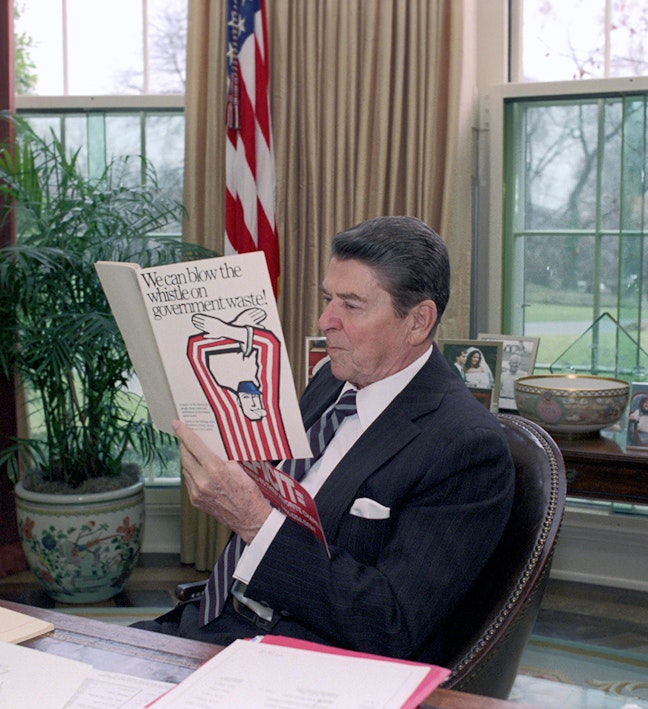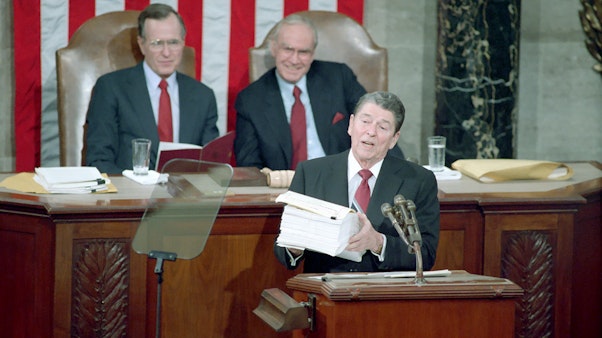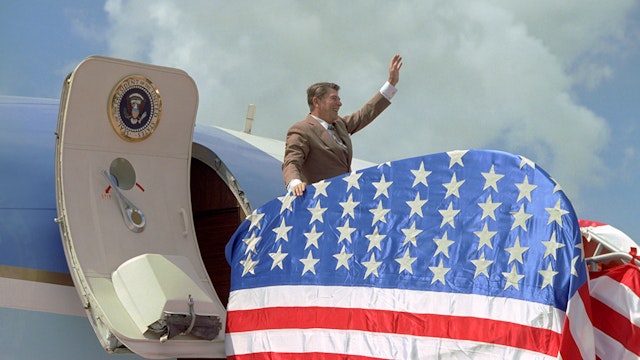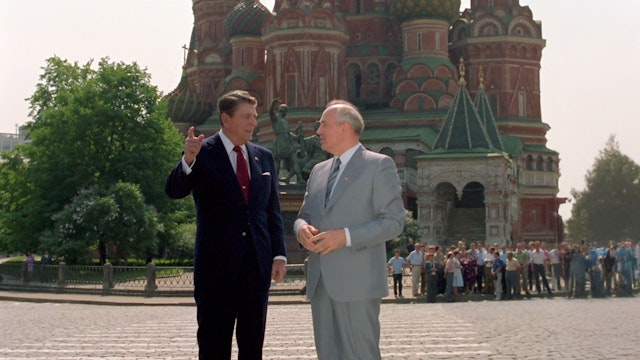The Presidency
Domestic Policy
A More Perfect Union
Throughout his eight years in the White House, Ronald Reagan worked every day to fulfill the promise of "domestic tranquility" laid out in the Constitution’s opening words. His goal was to form a more perfect union, and that vision was his guiding principle—the "north star" of his presidency.



Commitment to Efficient Government and National Security
Government Should Serve the People
One problem that was of particular importance to the President was the how well the government served the people. He firmly believed that the government should work for the people, not the other way around. President Reagan thought of the people as his boss, who, by electing him, had hired him to do the job. He believed that the government's role is to serve the citizens, ensuring their freedoms and not to impose excessive control over their lives.
Fixing Inefficiencies of the Federal Bureaucracy
Throughout his career, Ronald Reagan often shared stories about the inefficiency of the Federal bureaucracy and vowed to address it. His administration reduced excessive paperwork for businesses and made real changes that impacted people daily. When he took office, it took 7 weeks to receive a Social Security card and 43 days for a passport. By the time he left office, either could be obtained in just 10 days.
Protecting America's Environment
Ronald Reagan deeply loved America. From his beloved California to the New York Island, he was in awe of our country’s sheer beauty. Spacious skies, amber waves of grain, purple mountains’ majesties, oceans white with foam were not just words to him. It was how he saw America. Reagan felt a responsibility to protect the environment and preserve its natural beauty. His administration took action by creating the first Department of Justice special unit to prosecute criminal polluters.
Escaping Poverty and Raising the Excellence in Education
President Reagan never forgot what it was like growing up with limited means. He deeply cared about helping people escape poverty. Under his leadership, federal spending for low-income assistance rose by 40%. He also saw education as the key to overcoming poverty. After the National Commission on Excellence in Education called the U.S. "A Nation at Risk," he advocated for higher standards, accountability, parental choice, and merit pay for teachers and principals.
Appointing Sandra Day O'Connor
Another key component of his program was the appointment of judges who would faithfully interpret the Constitution rather than legislate from the bench. Of all the judicial appointments made by the President, none was more historically significant than Sandra Day O’Connor in 1981. When Ronald Reagan became the first President to nominate a woman to serve on the United States Supreme Court, he shattered a glass ceiling that had been in place since the founding of the country, forever changing not only the judiciary, but the role of women in our society. Little girls everywhere could now aspire to heights previously unavailable to them.
In many ways, President Reagan’s nomination of Sandra Day O’Connor was emblematic of how he viewed people – without an iota of prejudice. Gender, race ethnicity and religion just did not matter to him in the slightest. They were never factors in his decision making, other than when people were being discriminated against. When that happened, President Reagan was a tenacious fighter for equal rights. Under his leadership, the Federal government equaled or surpassed the number of civil rights cases filed by any previous Administration in virtually every enforcement category. Principal civil rights organizations received almost 18% more in funding during his presidency.



The First President to Address HIV and AIDS
Ronald Reagan was the first President to address the issue of HIV and AIDS. He established a Presidential Commission and consulted with Government agencies and private groups, after which a broad plan to fight the disease was implemented. Billions of dollars were committed for research, regulations making it difficult to get drugs to patients were eliminated and educational programs were developed, all of which were underpinned by a message of empathy for those infected. In a speech to the American Foundation for AIDS Research in May, 1987 he said:
“What our citizens must know is this: America faces a disease that is fatal and spreading. And this calls for urgency, not panic. It calls for compassion, not blame. And it calls for understanding, not ignorance. It’s also important that America not reject those who have the disease, but care for them with dignity and kindness.”


